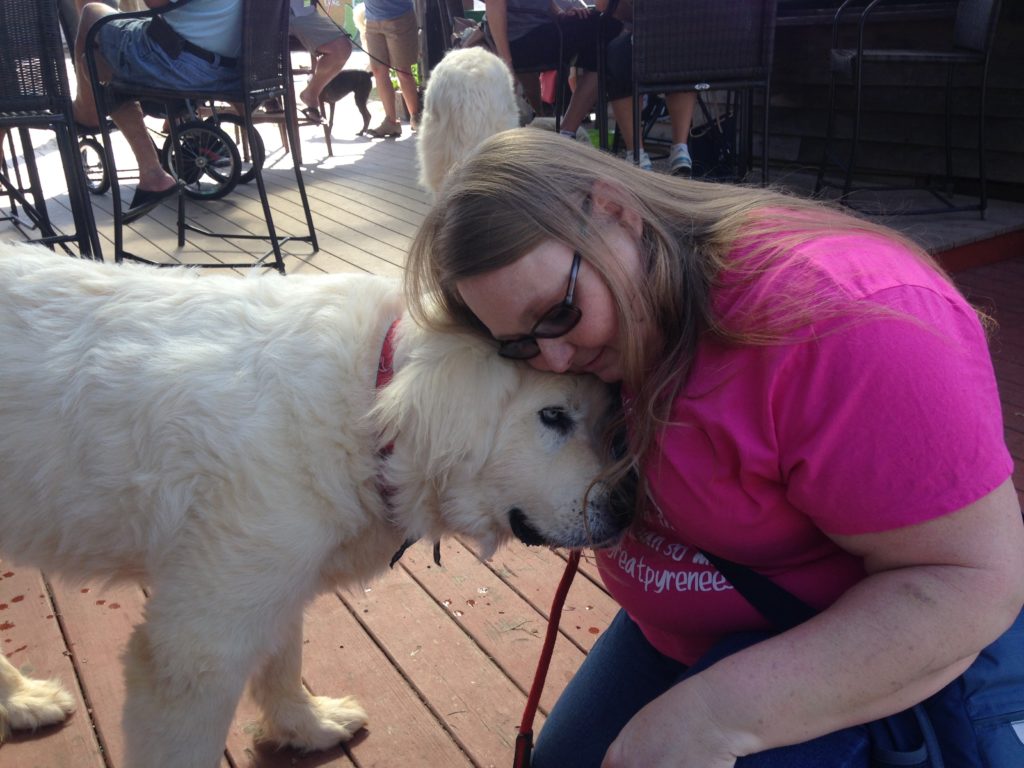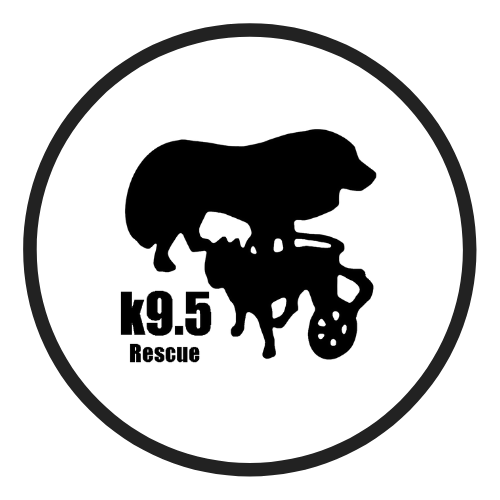The Great Pyrenees is a breed of royalty and distinction. When you look at one you see strength, wisdom and kindness all rolled into one. They are beautiful creatures both physically and soulfully, completely devoted to their loved ones from the farthest depths of their hearts. They are almost magical.
The Great Pyr is recognized as a Livestock Guardian. At an extra large size, averaging 90-150lbs, they are strong and sturdy enough to handle very large predators. They have thick, solid bodies with great muscle strength and agility that allows them to challenge other large animals if they threaten the flocks. In addition, their dense, double coat is protection from the jaws of the opposition. They have a huge bark which warns a predator that they are on guard and the area is protected, while their intelligence and fearless attitudes drive them to their mission of defense.
While strong and powerful, the Great Pyr is also a very gentle and docile creature. Often as a guardian you will find the Pyr lying in the middle of the flock as a family member or perhaps next to a birthing mother. If they find an animal has, for example, escaped the fenced boundaries and was attacked and killed, they often stay by the creature and “clean up” the animal by licking away the bloodshed. They often stay with sick or injured animals, as well, until help arrives. The flock is their responsibility and their love, and they nurture it as their own.
Other Pyrs are more family oriented and prefer the couch to a day in the sun. As a pet you won’t find a better companion. They are devoted, soft hearted, affectionate and loving. They are gentle and calm, easily house trained, and do fine in both large and small homes. They are couch potatoes and very laid back. They do well with children and elderly alike. As their flock, the family is under their protection and the Pyr will guard it and take care of it as his or her own.
Great Pyrenees are amazing creatures of love and kindness. They are beautiful and always a topic of conversation. As puppies they are hard to resist, looking like nothing more than an overgrown cotton ball with two eyes and a black nose. They are probably one of the cutest puppies ever!
But is this the breed for me?
It is important to remember that the Great Pyrenees is NOT a breed for everyone. Despite their wonderful qualities, as in all breeds, there are also little idiosyncrasies that one must familiarize themselves with and accept in order to prepare themselves for being owned by a Pyr. Many of these idiosyncrasies are the reasons we have an overabundance of Pyrs in rescue and in shelters daily. All are at risk for euthanization, and not all are rescued or adopted.
So what ARE the faults of this fabulous creature? Can they truly be all THAT bad? In some instances yes they can – and those who thought that adorable little ball of fluff was the most precious thing they’ve ever seen or known often find themselves wishing they’d of not been so hasty.
1. Pyrenees are first and foremost HUGE!!! Not big, but HUGE!! That’s what “Extra Large” means and why those paws are as big as your hand at 2 months old. When they sleep on the bed, they take up the entire mattress. If they want to be on the couch for a good afternoon nap, you won’t be due to of the lack of space. If they find a spot in the room that’s in your way, you simply have to take another route to get to where you’re going, or attempt to jump over the big white rug in the middle of the floor. If you don’t like HUGE dogs that start at 90lbs and continue going higher and higher in the weight range…DO NOT get a Great Pyrenees! If you think you like giant sized dogs, ALWAYS make sure you get a first hand look at any dog that is truly that weight…not just overweight…so that you can get a notion of their size.
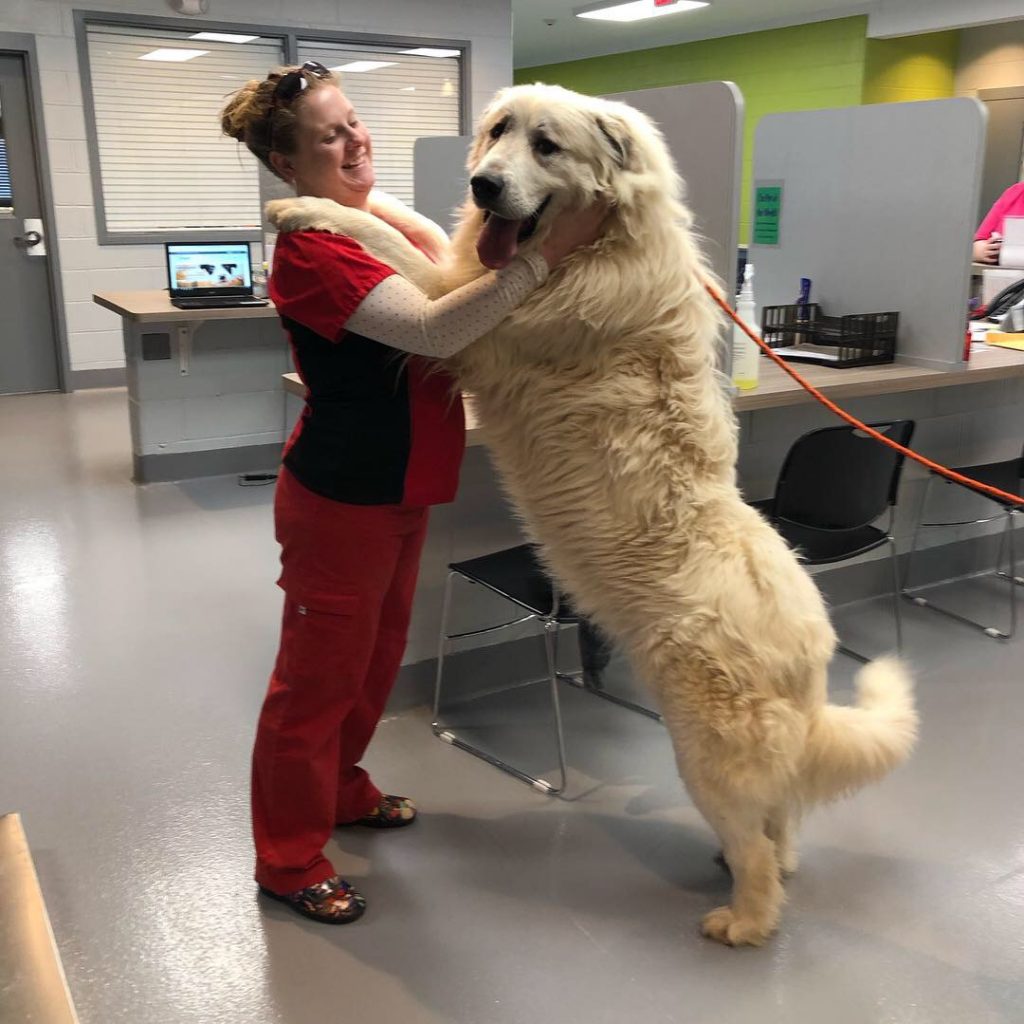
2. Pyrenees have LOTS of hair, and yes, they do shed year round. Grooming is often overwhelming with Pyrs because you have to constantly brush them to avoid a disaster in the dog coat world. Lack of brushing results in small to enormous mattes. Another Pyr hair obstacle is that you have hair everywhere, and it’s more noticeable because it’s long and white. In addition, because of their size, you must consider things like finding it on the interior ceiling of your car. Bathing is also a tremendous undertaking because you have a HUGE, bullheaded, strong dog with LOTS of hair…and it’s no small task at all. It’s best to get a Pyr acclimated to bathing as soon as you get one so that they will learn that patience is a must! On a good note, the hair that does shed is easier to pick up than most short haired breeds because it balls right up and is easy to throw away!

3. As mentioned, Pyrenees are very intelligent…so intelligent that they have a mind of their own. On top of this intelligence is independence, which often leads to owners becoming frustrated. What someone might refer to as a “dumb dog” is in reality a very smart dog that has you irritated and angry simply because they don’t want to do what you feel they should…and they could care less. “Come? Nah – I don’t want to. If you want me, you have to come and get me.” …and we always do when we love our Pyrs (granted we can catch them).
4. As a result, Pyrenees are a little more difficult to train. This is not because they aren’t smart but instead because they may or may not want to do something when you do or do not want them to do it. If they feel like it, sure, they’ll come when called or sit, but if they don’t, then well…they won’t. It takes consistency and persistence when training and dealing with a Pyrenees. THESE ARE NOT SHEPHERDS, LABS OR GOLDENS THAT WANT TO CONSTANTLY PLEASE YOU!! These are bullheaded, self sufficient, and strong willed dogs that need firm training…but NOT mean or aggressive training. An abused Pyrenees will turn out to be a dog of devastation and heartbreak, overly fearful or possibly overly protective of itself and of people, while also guarding toward other animals. THIS TYPE OF SO CALLED “TRAINING” IS UNACCEPTABLE AND WILL NOT ACCOMPLISH ANYTHING WITH A PYRENEES BUT AVOIDANCE!!!
5. Another problem that Pyr owners face is A LOT of barking. Pyrs are known barkers, and when they do so they are LOUD. Big dog = big bark. Oftentimes homes that are very close together in close-knit neighborhoods are not ideal unless the dog is primarily indoors (and yes, this is easy to do with a Pyrenees). Neighbors often become upset when the Pyrs begin to bark, causing friction.
Great Pyrenees bark the most and the loudest after nightfall, and people often become upset when a huge bark is outside their window after dark. As a result, if you live in a very close neighborhood it’s important that you know your neighbors are tolerant if indeed your dog does begin to bark while outside. It is also recommended to bring the Pyr inside at nightfall when living in close-knit neighborhoods.

6. Pyrs often do very well with cats, smaller dogs, and often do well with the larger ones. However, in most cases the Pyr will be the Alpha dog. They may not always show it, but when it comes down to any type of trouble or threat, the Pyr will take charge.
It’s not uncommon for Pyrs to be gender aggressive as well. If you have two very strong willed males or females you might very likely find yourself in a position of witnessing dog fights, or even end up in the middle – this can be dangerous, especially when the dogs are of significant size. This typically does not happen with a smaller dog, but there’s always the possibility of a Pyrenees not liking a small dog or cat. As a result, it is very important to evaluate your household, the gender of your current dog(s), the disposition of your current dog(s), and how they interact with other animals. Something else to remember is that most often it is important not to let other animals around your Pyr’s food bowl. A human can eat with a Pyr out of the same bowl, if so preferred, and even take it away, but another animal is not to come near the food, according to a Pyrenees.
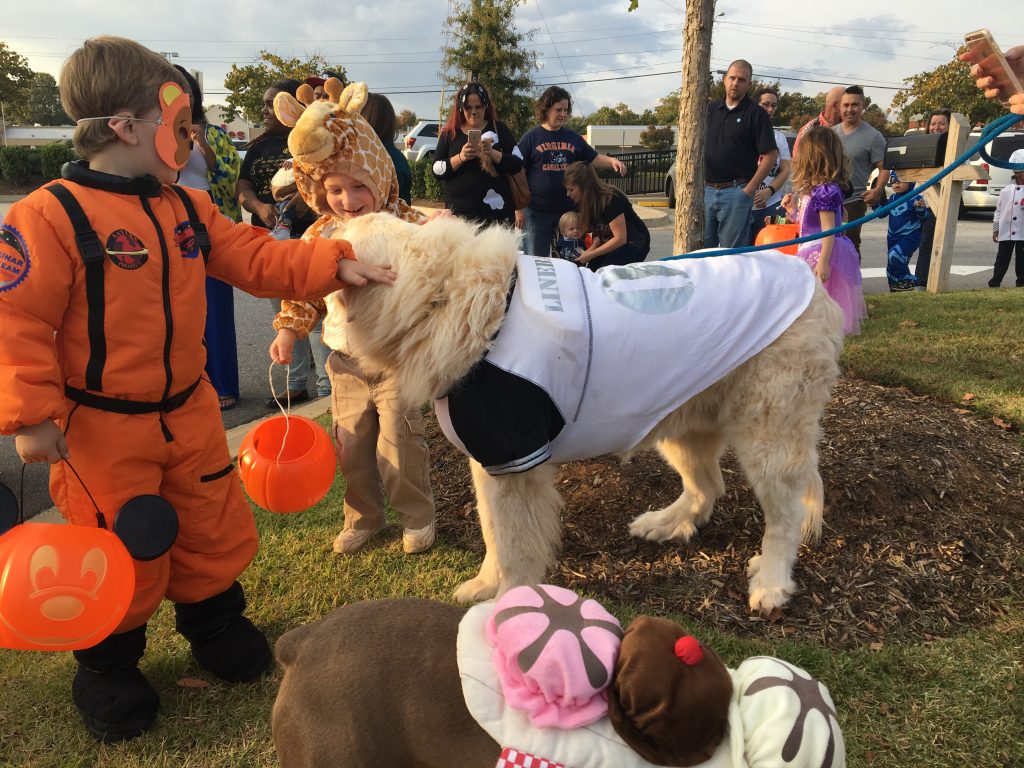
7. Great Pyrenees are gentle and patient with children, but when considering one as a pet you must remember that it is necessary to be diligent with doors and leashes. Children should not be allowed to hold the leash alone when walking because of the strength of a Pyrenees. If they see something that excites or upsets them, the child will not be able to hold the dog back and could fall and get hurt.
Children and their friends can easily leave doors open without realizing there is a problem. An open door is an invitation to a Great Pyrenees, suggesting that the dog should run out and explore. Once a Pyr is out the door it is VERY DIFFICULT to catch the dog. It is imperative that children and their friends must always be attentive around doors so that you will not find yourself with a lost Great Pyrenees.
8. THEY ARE ROAMERS – A Great Pyrenees MUST ALWAYS be in a securely fenced in yard or on a leash. Pyrs are tremendous “roamers,” and as mentioned earlier, most often they don’t come when called or “stay” when told. If not confined, they will take off and wander to amazing distances, sometimes returning, sometimes not. Not only is this an annoyance, it is a possible danger to the dog, as they can get lost, injured or even killed, be it by a car, a person or a shelter/animal control. In addition, in most cases fencing needs to be a minimum of 5 feet high. Pyrenees are a giant breed with strength, agility and determination – it is easy for them to clear a 4ft fence, and some even scale a 6ft fence. They can also easily go under or through the fence, if they so desire. Be prepared to have your fence in tip top shape for your Great Pyrenees.
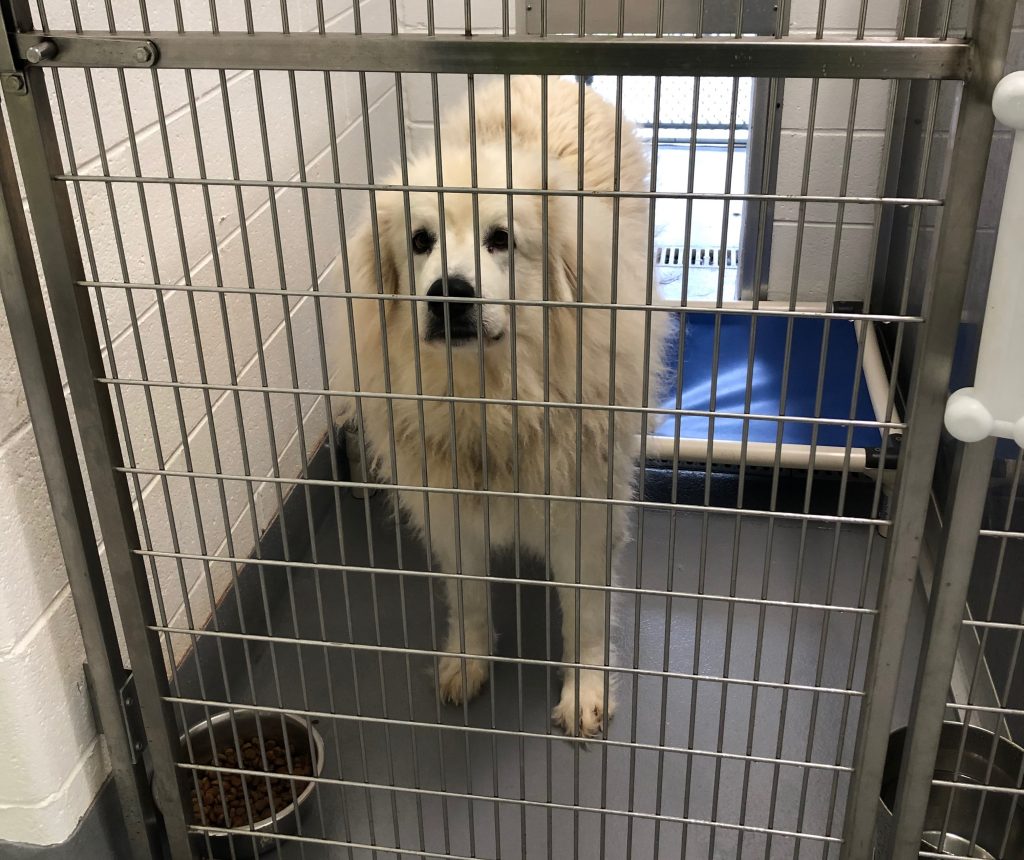
Electric fences are not suitable for a Pyrenees…remember that double coat, the strong will and intelligence?? Electric fences are pointless.
DESPITE what some might insist, roaming is NOT something that can be corrected with training. All good trainers will tell you that you cannot train a Pyr to stop roaming and stick by the house without a fence. PLEASE, do not assume you will be a rare owner who has a Pyr that stays close to home without a fence. You are talking about a life that might come to an unexpected end if this assumption is made, and that would be no less than a tragedy. If you do not have a fenced in yard, be prepared to walk your Pyr on a leash at all times, even for potty breaks, a walk to the car, and in rain, snow and blistering heat. In cool weather, be preared to stay out for longer durations since they enjoy the cooler temperatures.
8. Another thing to remember is that the bigger the dog, the bigger the bills. Although Pyrs eat much less than what is typically assumed, they still need to consume enough for their size, which most people think is a significant amount. Health care is another consideration, as the bigger the dog, the more medications, the more anesthesia for any surgeries, the longer it takes for procedures. Boarding can also be more expensive since they sometimes charge by size.
If these things are issues that you are willing to accept, you will, without question, adore the Great Pyrenees. Their hearts are tremendous and full of love, and their strong yet gentle disposition is one to be admired. Those who love a Great Pyrenees cannot live without one (or 2, or 3, or…) and nothing compares. Their expressions, their funny wit, and the way they give their hearts to you is enchanting and encompassing. As a result, those who are owned by a Great Pyrenees find themselves a little happier and a little more at ease, for having a Pyr in your life promises true and never ending love, a promise of security, and a lifetime of joy.
